Eskipoo (original) (raw)
It takes most Eskipoos 15 to 17 months to become fully grown.
The Eskipoo is a designer dog achieved by crossing an American Eskimo Dog with a European poodle. Breeders developed this dog, which weighs around 15 pounds and stands about 11 inches tall, as a happy-go-lucky family addition. Most have a double coat, which may make them ideal companions on cold winter days. Almost all have the flappy ears of the European poodle. If you are looking for a new member of your family, consider the Eskipoo. They love to be with you all the time, and their antics will have you laughing frequently.
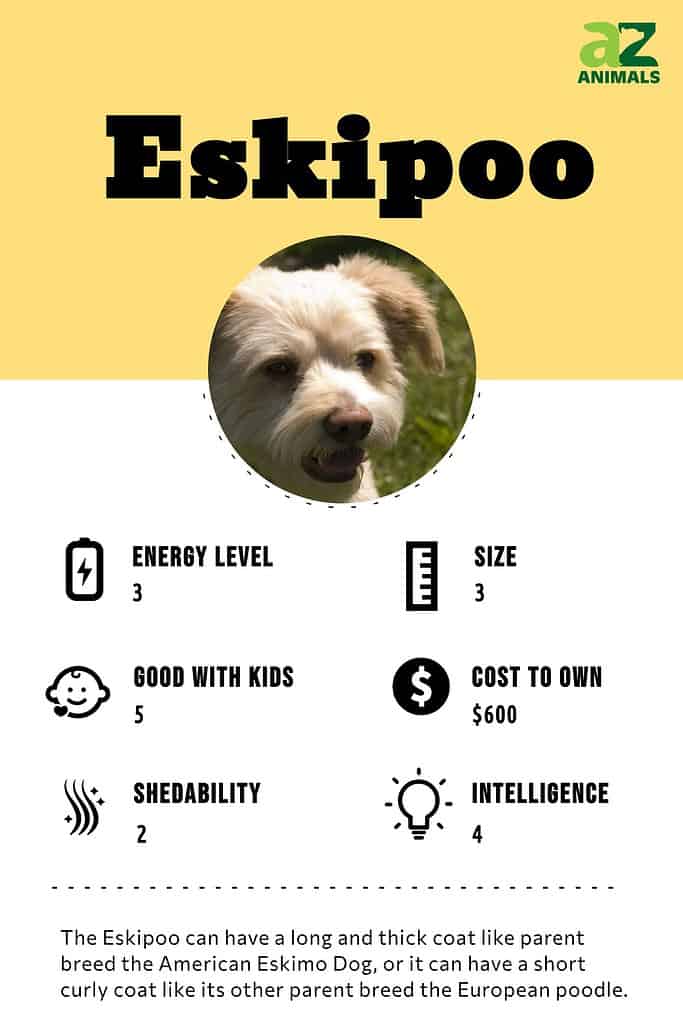
3 Pros and Cons of Owning Eskipoos
| Pros! | Cons! |
|---|---|
| Family dogs: They love to be in the middle of everything, so whatever your family is doing is fine with them. | Suffer separation anxiety: They suffer from more separation anxiety than most breeds. |
| Intelligent: They are very smart animals who want to please their owners. | Stubborn: Sometimes these dogs want to do things their way. |
| Great snuggles: They love to snuggle with you, and their coat will help you stay warm as they take a nap on your lap. | Energetic: They are energetic animals that need activities to keep them mentally stimulated. |
6 Types of Eskipoos
The Eskipoo — which is also called the Pookimo, Eskapoo, Eskimopoo, and Eskidoodle — can have a long and thick coat like the American Eskimo dog, or it can have a short curly coat like the European poodle. Others fall somewhere in between. If you are worried that you will not have time to groom it properly, choose the poodle-type coat option. Since either option is very dense, these animals do better in cooler climates. You will find them in a variety of colors, including:
- White: This is the typical color of an Eskipoo’s coat.
- Black: Some Eskipoos are black all over, while on other animals black is mixed with another color. All different shades of black are possible, including those with a red or blue tint.
- Cream: All different cream shades are possible, from very light off-white to a deeper tannish color.
- Grays: These animals may be born with a gray coat, or it may turn that way before age five.
- Apricot: These animals are a dull, saturated orange, very similar to an apricot’s color.
- Brown: From light to dark, many different shades of brown are possible.
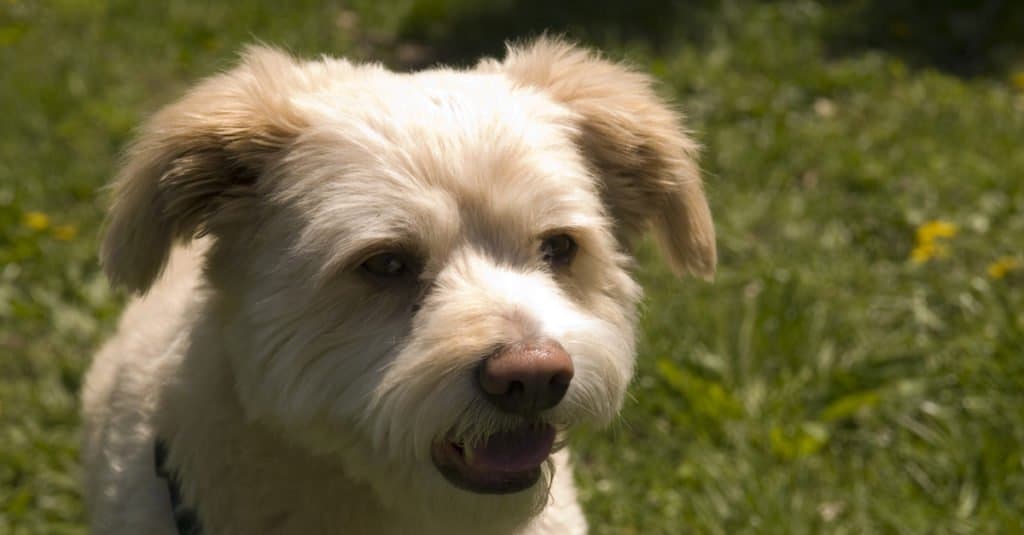
Eskipoos are typically white but can come in a variety of colors.
©Zeljka/Shutterstock.com
Evolution and Origins
As is the case with many hybrid dogs, the exact origin of the Eskipoo is unknown. However, it’s possible that it was developed when designer dogs started being bred in the 1990s and crossbreeds with poodles — such as the Pomapoo, Maltipoo, Yorkiepoo, Cavapoo, Labradoodle, Schnoodle, and Goldendoodle — became popular.
An Ekipoo’s appearance (particularly its coat), health, and temperament can vary depending on which of its parent breeds it takes after, so it’s instructive to take a look at the American Eskimo Dog and European poodle to better understand the Eskipoo.
Both parent breeds come in three sizes — standard, miniature, and toy — with the miniature size of the American Eskimo Dog often used for breeding the Eskipoo. Both breeds have European roots, German ties, and circus performance experience.
Despite its name, the American Eskimo Dog has nothing to do with indigenous Inuit people but is descended from a Nordic breed of dog known as the German Spitz and is believed to have been brought to the U.S. by German immigrants in the early 1800s. These dogs gained popularity as show dogs due to their agility and intelligence, with the most famous being Stout’s Pal Pierre, known as the first dog to walk the tightrope, who performed with Barnum & Bailey Circus during the 1930s.
The poodle can trace its lineage to Germany in the 1400s when it was bred to assist in duck hunting. The French further developed the breed, which they called the Caniche, which translates to “duck dog,” and while the miniature poodle was often used by the nobility to hunt truffles, the toy poodle became a lapdog owned by royalty and the rich. Poodles were also once featured as circus performers and became especially popular as show dogs following a poodle named Nunsoe Duc de la Terrace winning Best in Show at Westminster Kennel Club Dog Show in 1935.
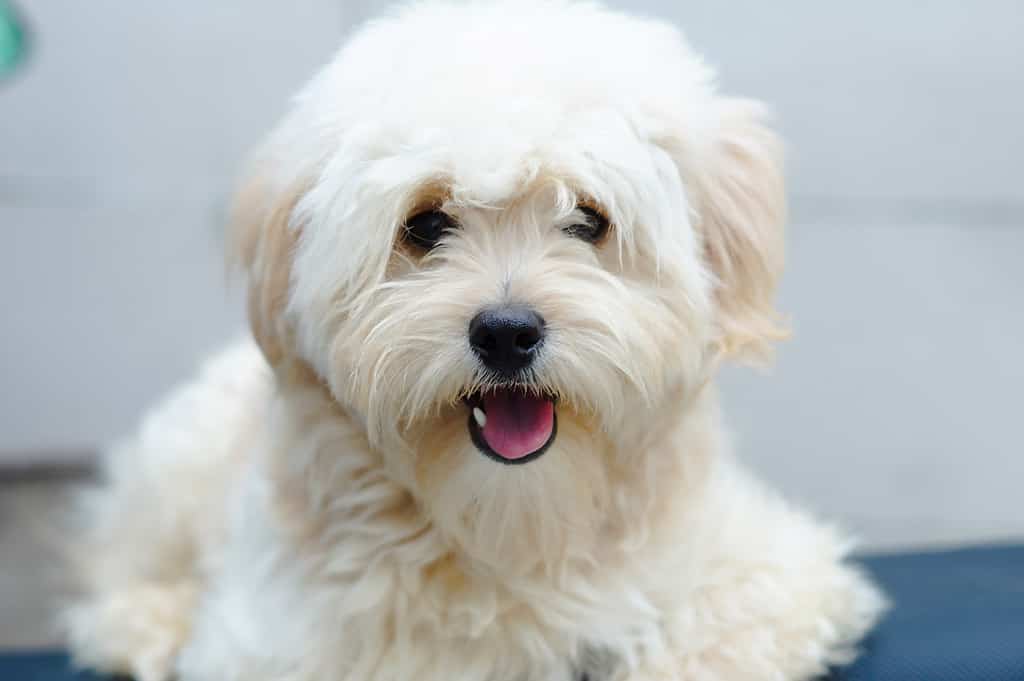
Like the Eskipoo, the Pomapoo is a poodle hybrid and is a crossbreed with the Pomeranian.
©Jimmy Gunawan/Shutterstock.com
Size and Weight
Eskipoos can stand between 9 and 15 inches tall at the shoulder. They weigh between 10 and 20 pounds. There is little difference between the size of males and females.
| Height (Male): | 9 to 15 inches tall |
|---|---|
| Height (Female): | 9 to 15 inches tall |
| Weight (Male): | Typically 10 to 20 pounds |
| Weight (Female): | Typically 10 to 20 pounds |
Common Health Issues
Eskipoos are generally healthy animals, but there are some health issues that you may want to watch out for, including:
- Cataracts
- Digital squamous cell carcinoma
- Luxating patellas.
While the vast majority of Eskipoos will not get these diseases, it is essential to learn about them and spot them early.
American Eskimo Dogs are particularly prone to cataracts, and they can pass this condition on to Eskipoos. In a mature cataract, the part of the eye that is typically black turns white. This condition can cause blindness. Since it is often hereditary, this is a question that you may want to ask the breeder about the parent. Many learn to adapt very well to being blind.
Another disease that American Eskimo dogs are prone to is digital squamous cell carcinoma, and it can be a problem for some Eskipoos. Several factors can cause these cancerous tumors on the dog’s paws, including exposure to too much sunlight. Watch your Eskipoos’ feet for crusted over or irritated places and get them checked out by a veterinarian.
Luxating patellas is a displaced kneecap. Watch your Eskipoo run across the yard, and you may see them running on three feet. Then, suddenly they are running on all four again. This is the most common sign of luxating patellas. This disease is also prevalent in Maltese, Chihuahua, French Poodle, and Bichon Frise breeds and may cause the dog to throw its leg out to the side when it runs. It can be surgically corrected if needed because it often leads to other bone and ligament issues.
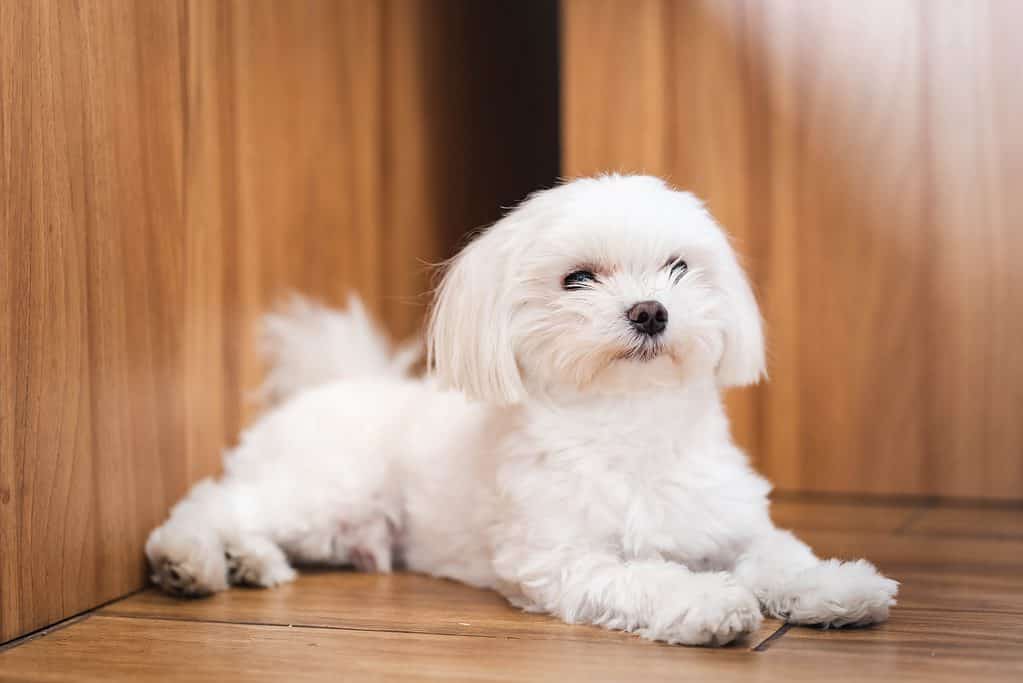
Like the Eskipoo, the Maltese is also prone to luxating patellas.
©Plernz/Shutterstock.com
Temperament
If you and your family are looking for a loyal companion, it is hard to beat the Eskipoo’s temperament. Like its parent breed the American Eskimo Dog, these dogs will gladly join in whatever way they can in anything that your family has planned. They have a very loyal temperament to your family, so they have a hard time adjusting if you are gone for even a couple of hours.
The Eskipoo is a high-energy dog. Therefore, you need to be sure that it gets plenty of playtime every day. If you don’t provide it, you can sometimes expect this dog to show a little destructive temperament.
As a breed, the Eskipoo is very sensitive, and it strives hard to fit in. If you are having a good day, then expect this dog to be active and happy. If life is not going your way, it is perfectly content to sit by you while you mope or cry. Getting an Eskipoo hug can be a great way to get to feeling better.
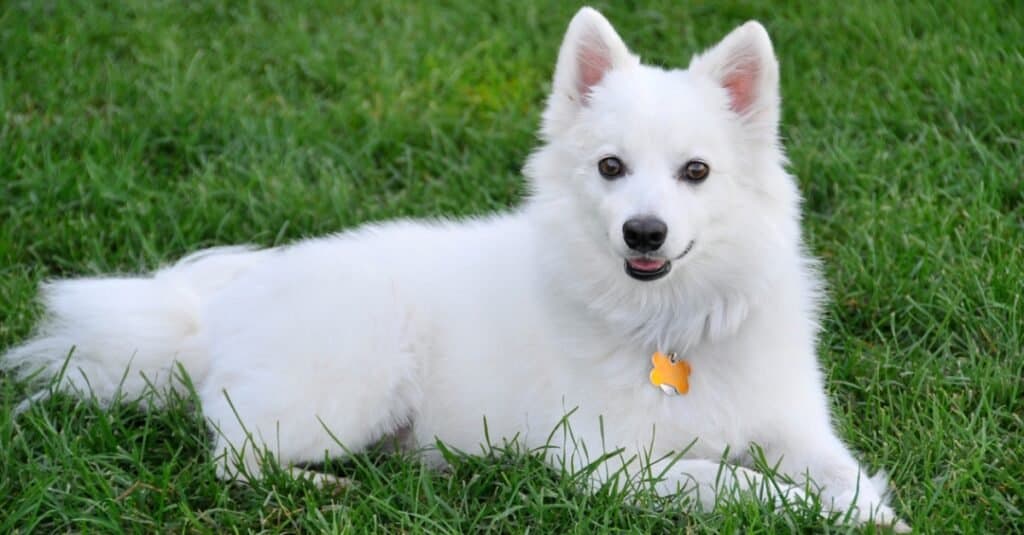
The Eskipoo takes after its parent breed the American Eskimo Dog in its family-friendly temperament.
©iStock.com/blendshapes
How to Take Care of Eskipoos
It is natural for new pet Eskipoo owners to be a little nervous that they will meet all their new dog’s needs. Thinking about several various factors can help ensure that you meet your Eskipoo puppy or older dog’s needs appropriately.
The Best Dog Food for Eskipoos
Full-grown Eskipoos are prone to obesity, like many other breeds, so ensure that you feed them high-quality food twice a day. Additionally, they may suffer from dental issues, so feed them dry kibble whenever possible.
Eskipoo puppy food: Feed the Eskipoo pup a combination of wet and dry dog food for the first 10 months. Then, switch over to totally dry dog food. Be sure to choose a high-quality food with a high amount of calcium as it can later help prevent bone and joint problems.
Eskipoo adult food: You should feed adult Eskipoos at least two meals a day. This is an active breed, so your dog may eat more than many dogs that are the same size, like the Pug or the Havanese. Watch to make sure that your dog does not become obese.
Because of Eskipoos’ propensity for digital squamous cell carcinoma, high-quality food with limited ingredients may remove potentially harmful additives from their diet.
Instinct Limited Ingredient Dog Food, Limited Ingredient Diet Natural Grain Free Dry Dog Food may be the way to go.
Look at this food’s ingredients: Vitamin E, Niacin, Thiamin, Calcium, Vitamin A, Riboflavin, B12, D3, Folic acid, Zinc, Iron, Manganese, and more. Not only will your Eskipoo’s bones and joints be more likely to develop healthfully with a diet like this, but his or her skin, fur, eyes, immune system, metabolism, and beyond will be set up for success. Plus, this food leaves out a lot of the ingredients that can cause health problems in dogs.
Click the link below to get Instinct Limited Ingredient Diet Natural Grain Free Food on Chewy and Amazon.
[lasso id=”430576″ link_id=”1764392″ ref=”instinct-limited-ingredient-diet-grain-free-recipe-with-real-lamb”]
Maintenance and Grooming
The Eskipoo can inherit its coat from either parent. If it gets its coat from its American Eskimo parent, then you need to give it a bath weekly and comb its coat every day with a wide-tooth comb. It also needs to go to the groomer for a trim about once a month.
If the Eskipoo gets its coat from its European poodle parent, it still needs a bath weekly because it has a double coat. Brush the dog with a soft brush two or three times a week. Dogs with this coat need to go to the groomer about every two months.
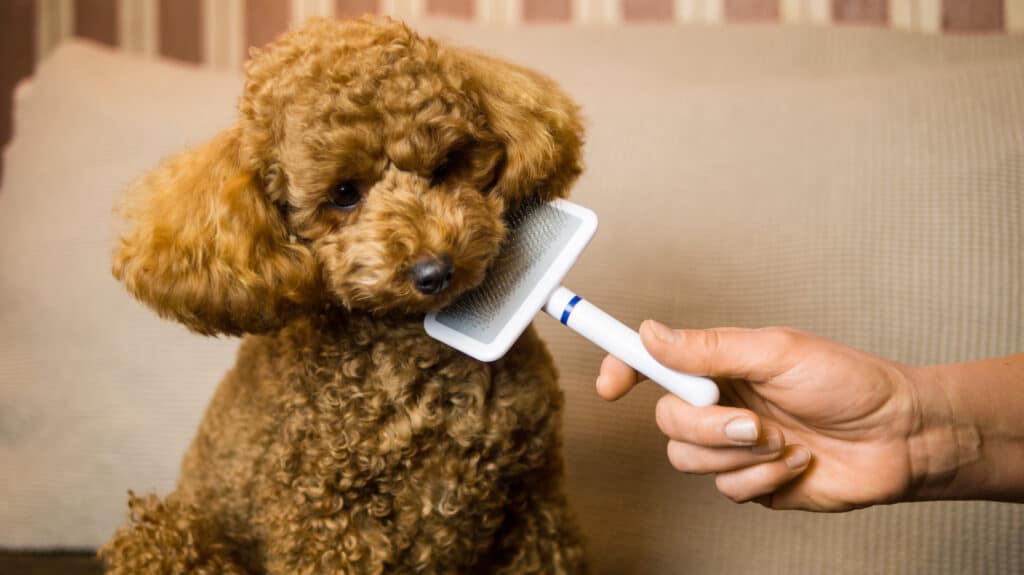
If your Eskipoo inherits the coat of its poodle parent, brush the dog 2-3 times a week.
©Kristina Arba/Shutterstock.com
Training
The Eskipoo is easy to train if you rely on positive reinforcement. Like its parent breed the American Eskimo Dog, this breed is generally a people pleaser so that it can be easily trained. Some dogs, however, retain a stubborn streak.
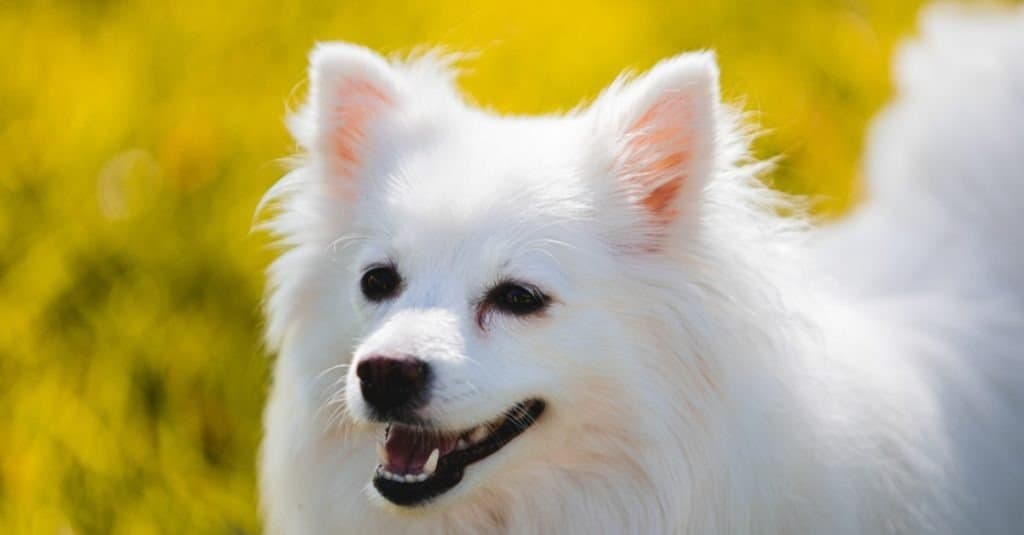
Like its parent breed the American Eskimo Dog, the Eskipoo is easy to train with positive reinforcement.
©Scarlett Images/Shutterstock.com
Exercise
Like its high-energy parent breed the poodle, the Eskipoo is an active dog that needs regular exercise. Two 30-minute walks a day can benefit this dog, along with some time to romp in the backyard or engage with the family while they are doing an active activity.
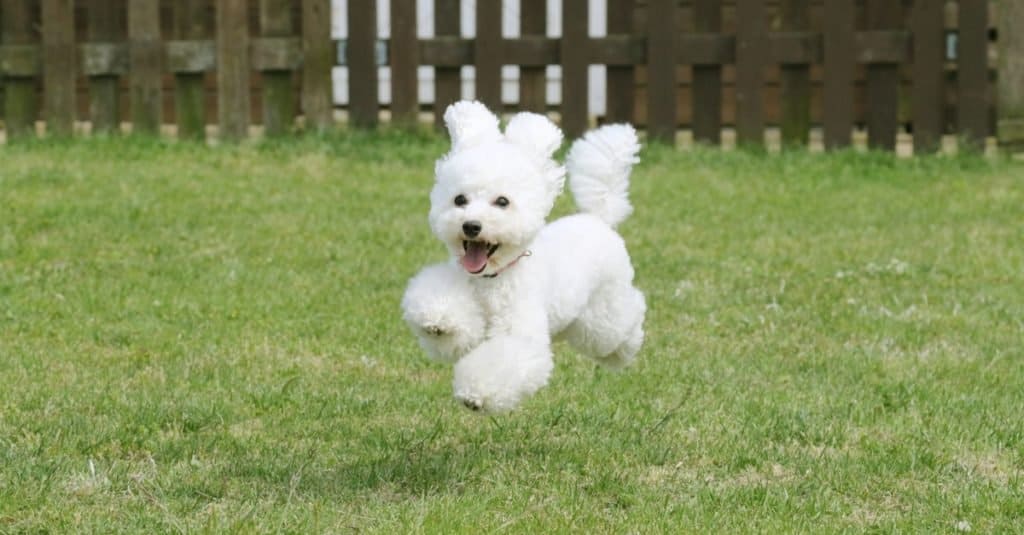
The Eskipoo is an active, energetic dog like its poodle parent breed.
©Rin Seiko/Shutterstock.com
Puppies
Your Eskipoo puppy must go to the veterinarian to check its health and get started on heartworm prevention and any other options to ensure healthy growth. Be sure to follow up regularly with your puppy’s health needs.
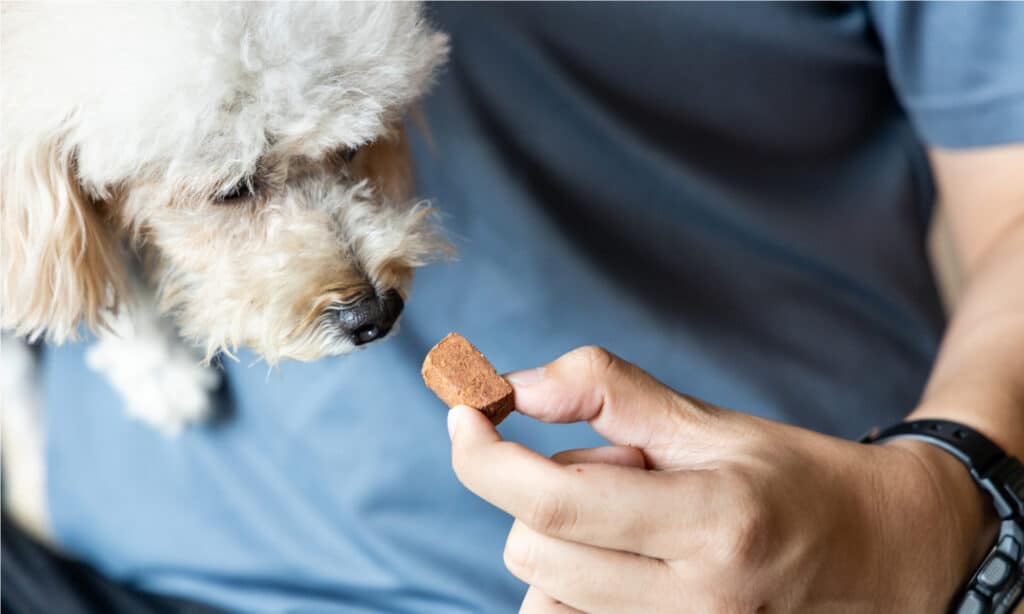
Eskipoo puppies should be given heartworm-preventative medication.
©ThamKC/Shutterstock.com
Eskipoos and Children
Eskipoos make excellent dogs for families. Be sure to teach the child how to interact with the dog appropriately. If it is an Eskipoo pup, you may need to supervise playtime.
Dogs Similar to Eskipoos
Several dog breeds are about the same size as the Eskipoo, including:
- Boston Terrier – With this breed, there is less grooming required than with the Eskipoo and these dogs prefer the same active lifestyle.
- Cavalier King Charles Spaniel – Some Cavalier King Charles Spaniels can be more stubborn than the Eskipoo, but they suffer from the same separation anxiety.
- Shiba Inu – Like the Eskipoo, this breed can suffer from separation anxiety. It is normally harder to train a Shiba Inu than an Eskipoo.
- Shih Tzu – Like the Eskipoo, this breed hates hot weather, though the Eskipoo can make a better family dog than the Shih Tzu.
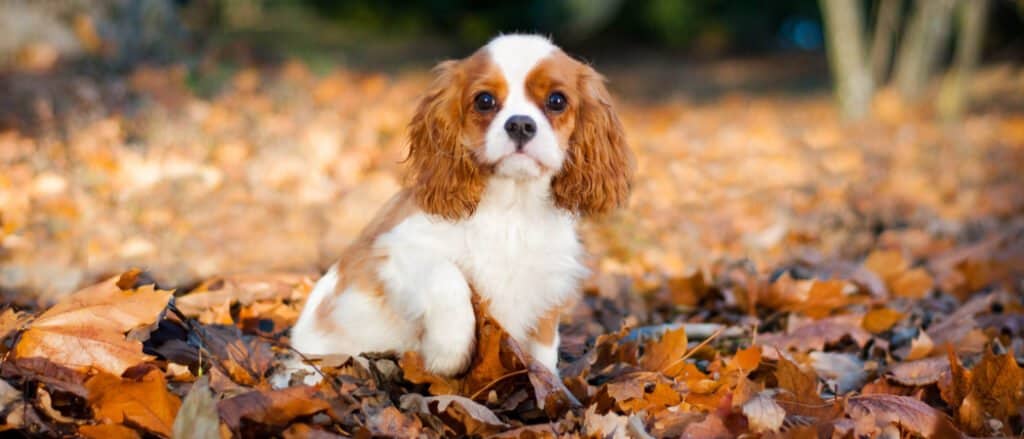
Cavalier King Charles Spaniels can also suffer from separation anxiety like Eskipoos.
©Sarune Kairyte/Shutterstock.com
Popular Names for Eskipoos
Popular names for Eskipoos often include:
- Zane
- Ghost
- Lady
- Toby
- Fluffy
View all 148 animals that start with E
An Eskipoo is a cross between a European poodle and an American Eskimo dog.
An Eskipoo is a small dog that seldom weighs more than 20 pounds. It usually stands between 9 and 15 inches at the shoulder.
Eskipoo are small dogs with round heads. They have a black nose and floppy European-poodle-style ears. Their eyes are often blue and set back on the head. This dog can have an American Eskimo-type coat or a European poodle-type coat. They come in a variety of colors.
In addition to the 600initialpricerequiredtogetafull−grownEskipoo,youcanexpectongoingexpenses.Dependingonthedog’scoat,youcanexpectthepricetobeabout600 initial price required to get a full-grown Eskipoo, you can expect ongoing expenses. Depending on the dog’s coat, you can expect the price to be about 600initialpricerequiredtogetafull−grownEskipoo,youcanexpectongoingexpenses.Dependingonthedog’scoat,youcanexpectthepricetobeabout50 every two to three months for grooming. You can also expect it to cost about $500 a year to feed the dog.
Eskipoos make outstanding dogs for kids as long as you set boundaries. They love all the activity that comes with an active family. Introduce the dog and child so that they know not to be too rough with this dog.
Eskipoos make outstanding family dogs if someone is home most of the time, or you take your dog with you wherever you go. They suffer a lot from separation anxiety.
Eskipoos usually live for about 10 to 13 years.